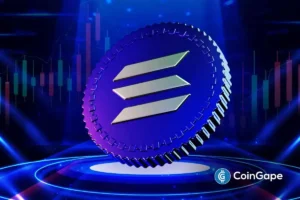Transitioning from Web2 to Web3: Insights and Strategies for Developers
Three and a half years ago, I made a defining choice that shifted my career from the traditional world of Web2 to the innovative realm of Web3. My move into blockchain development was not motivated by the allure of rapid success or market hype; instead, I sought meaningful technology that resonated with my values and inspired continual growth. Today, I view Web3 not merely as a job, but as a transformative lens that shapes my vision for the future of the internet. In this article, I’ll explore the key factors behind my decision, share valuable lessons learned, and provide actionable tips for developers considering their own transition into Web3.
Understanding the Rewards of Web3
One of the most significant differences I observed when shifting to Web3 was its unique compensation structure. Unlike traditional tech roles, which typically involve fixed salaries with HR complications, Web3 often offers flexible compensation through stablecoin payments and token incentives. Payments can go directly to your digital wallet, and owning project tokens allows engineers to have a stake in the success of the projects they’re developing. While this structure can introduce volatility—market fluctuations can impact token value—the upside potential often far outweighs the risks. Many senior Web3 developers earn higher salaries compared to their Web2 counterparts, especially when factoring in token incentives. However, it’s essential to acknowledge that stability can be elusive in a fast-moving environment, making adaptability crucial for those entering this new landscape.
The Remote-Native Culture of Web3
Remote work is more than just a trend in Web3; it’s embedded in the fabric of the industry. Unlike traditional organizations that are integrating hybrid models, Web3 projects operate on distributed teams from the outset. This allows developers to create a work-life structure that emphasizes personal freedom and autonomy. Anonymity is also prevalent; many contributors don’t share their legal names and remain pseudonymous, especially in roles like smart contract auditing. While this culture may feel isolating to some who thrive on in-person collaboration, it offers unparalleled flexibility for those who value independence and privacy in their professional lives.
Embracing a New Mindset in Development
Transitioning to Web3 isn’t just about adopting new technologies; it involves embracing a different development mindset. This space fosters a culture of experimentation where traditional development practices may not apply. New programming languages and frameworks, such as Solidity, are still evolving, offering a playground for developers who thrive in uncharted territories. Web3 demands a high tolerance for change and agility, meaning that adaptability is as crucial as technical skills. Developers comfortable with learning and experimenting will find Web3 to be an exciting and rewarding environment, but those looking for predictability may struggle to adjust.
The Significance of Open Source in Web3
Transparency stands at the heart of Web3, where approximately 80-90% of all blockchain code is open source by default. This openness not only encourages collaboration but also builds trust within the community. By publishing their code, developers provide a clear signal of integrity, enabling scrutiny and public contributions while catching issues before audits. For those who value open-source philosophy and collaboration, Web3 allows ample opportunities to engage in meaningful projects. This culture invites developers to contribute to larger initiatives, providing a rare platform where building in public is both encouraged and expected.
Navigating Regulatory Challenges
Despite Web3’s rapid expansion, it also faces a landscape filled with regulatory uncertainties. Different jurisdictions exhibit varied levels of acceptance and frameworks around blockchain technologies. While some regions, like the EU, are rolling out contemporary regulations like MiCA (Markets in Crypto-Assets), others still treat the sector as a gray zone. Recognizing these challenges, Web3 professionals must stay informed and adaptable as regulations evolve. The industry is gradually moving towards clarity, evidenced by recent milestones in the approval of Bitcoin and Ethereum ETFs in the U.S. As developers navigate through this evolving landscape, they must maintain adaptability and readiness for ongoing changes.
Key Strategies for a Successful Transition to Web3
For developers contemplating a switch from Web2 to Web3, here are several vital strategies to ensure a smooth and successful transition:
-
Leverage Your Existing Skills: Don’t feel pressured to start with entirely new technologies. Your current programming languages and leadership experience can be significant assets in Web3 projects.
-
Master Fundamental Skills: Familiarize yourself with essential languages such as JavaScript and Python, and ensure you have a solid grasp of system design and engineering principles. The right mindset is often more valuable than specific technical stack knowledge.
-
Foster Strong Relationships: In remote-first teams, building trust and accountability with teammates and managers can pave the way for future opportunities. Invest time in creating meaningful connections.
-
Take Initiative: Don’t wait for assignments; actively seek ways to contribute and lead. Taking initiative can significantly enhance your visibility and lead to rewarding opportunities.
-
Build Your Personal Brand: Share your insights and expertise publicly, whether through professional networking sites or anonymous platforms in the community. This strategy can open doors to unique opportunities.
- Stay Engaged with Crypto Twitter: Being active on platforms like X (formerly Twitter) enables you to stay current with trends, engage with industry leaders, and broaden your network in the Web3 space.
In conclusion, transitioning from Web2 to Web3 signifies more than just a change of technology; it demands an evolving mindset that embraces uncertainty, fosters adaptability, and cultivates community engagement. The rewards of Web3 provide unprecedented opportunities for developers willing to navigate the complexities of this new landscape. By applying the strategies outlined above, you can not only ensure a successful transition but also position yourself at the forefront of next-gen technologies that are reshaping the internet as we know it. Welcome to the future of Web3—let’s build it together.

















